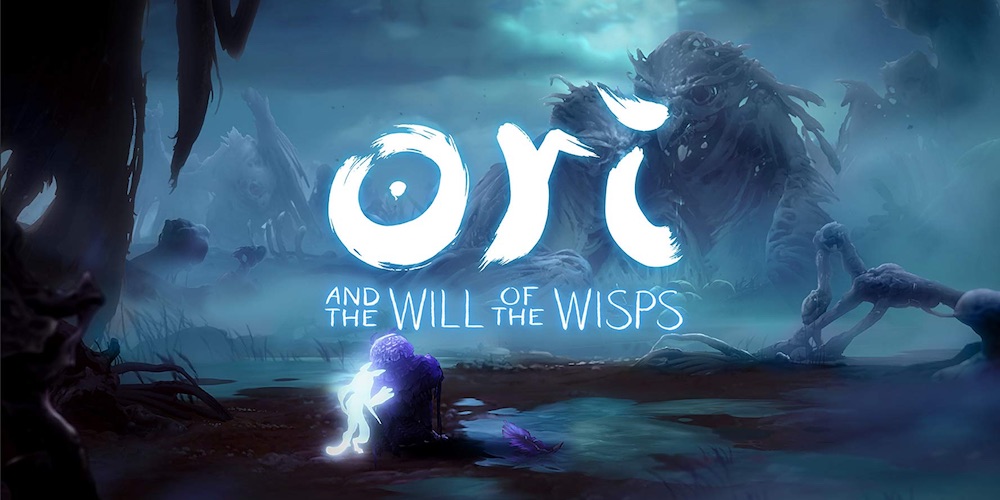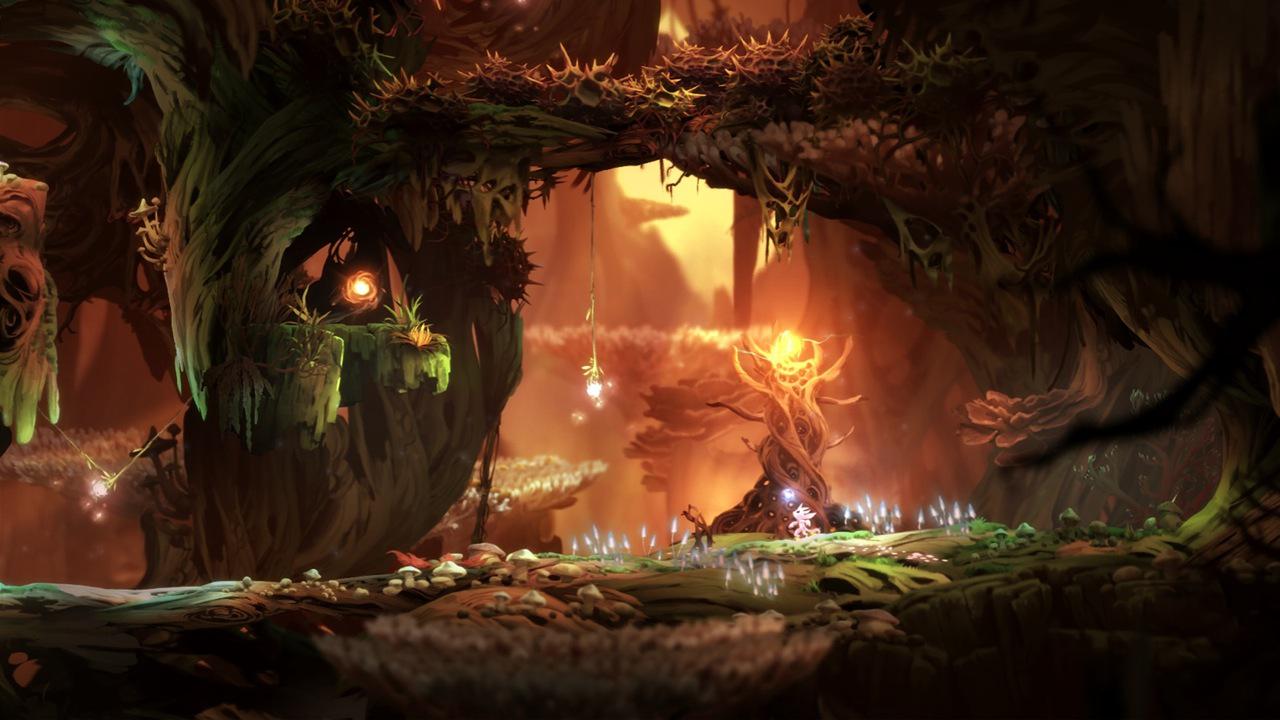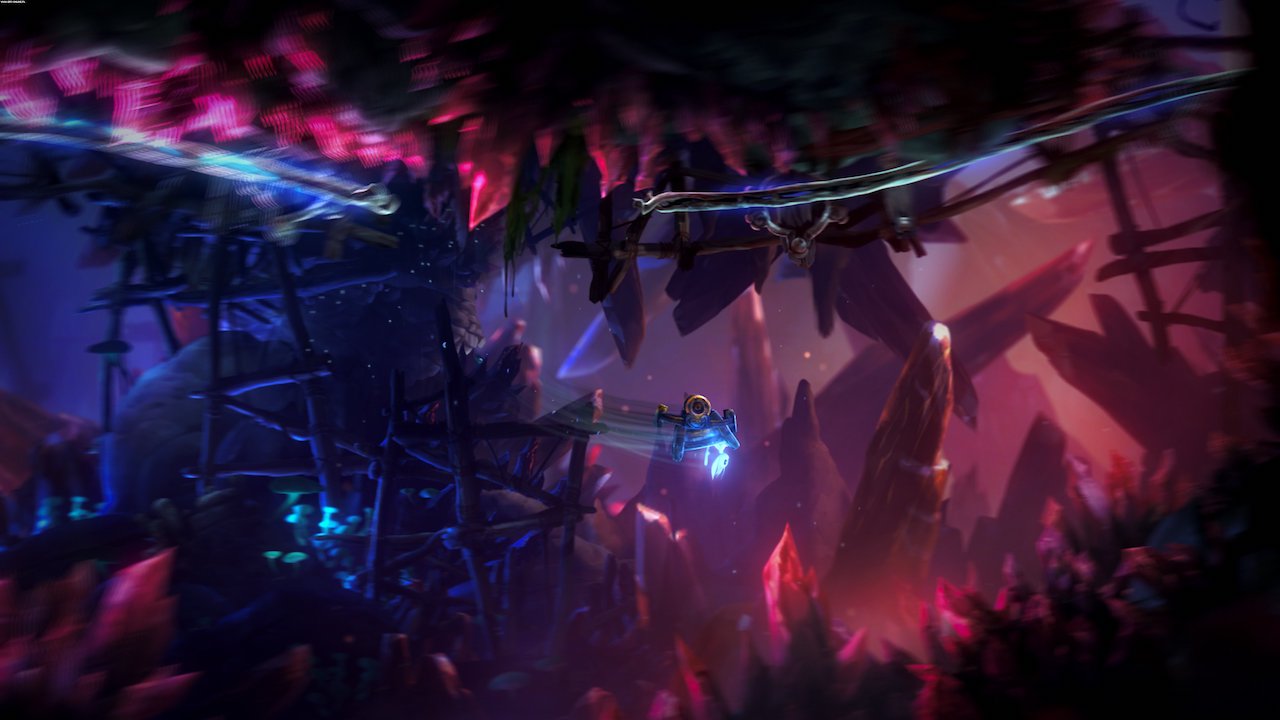
Ori and the Blind Forest was a game that blew me away when I originally played it. Taking inspiration from one of my all-time favourite genres, it should’ve been a no-brainer for me, but I didn’t touch it until it was highly recommended to me by a friend. It’s an experience that has stuck with me ever since because of its beautiful narrative, gorgeous environments, and fluid Metroidvania-esque gameplay. The announcement of a sequel came as a surprise, but it was a pleasant one, and I wasn’t going to pass up a hands-on opportunity with it.
I got to play through an entire level as Ori with a relatively decked out skill-set. I could grapple and use numerous weapons made out of Ori’s spirit energy. Combat instantly has far more depth and nuance to it than the first game, thanks to the selection of weapons available to you. Instead of upgrading one attack, you have a few options, including short and long-range abilities. It feels more fluid than standing around and hitting one button while trying to awkwardly avoid attacks, and it left me feeling as if the Ori I’d known has gotten stronger.

The platforming largely remains the same, but one power-up I received within the demo allowed Ori to bury through sand and blast out of it for extra height. This made for some difficult yet entertaining platforming sequences that require quick reflexes and sharp timing if you want to get through without taking damage. It feels as if the groundwork laid by the first game is being built upon in meaningful ways, and more powerups in the full game means I haven’t even scratched the surface.
When I acquired a map for the area I was exploring; it became apparent diverging paths and exploration is still a focus for the series. Venturing off the beaten track and you’ll often find challenging platforming gauntlets that reward you with permanent increases to health or spirit energy. You’ll also come across NPCs that you can purchase items from and acquire side quests. I only had the opportunity to do one during my time with the game, but if the other ones are of the same quality, the full game will have a plethora of meaningful side content.
There was also a short time trial activity that had all the times of the players that had attempted it on the demo console. I thought I’d optimised my 34-second run pretty well, only to be shocked by number 1 on the leaderboard who managed to complete it within 24 seconds. If there are more of these in the full game, it’ll create for loads of additional replay value and competition between the players who look for it.

Graphically, Ori and the Will of the Wisps is mostly gorgeous. The background art and environments are meticulously detailed, but the few textures that do stick out like a sore thumb are very noticeable. They’re few and far between, and will most likely be fixed up before the game releases. Otherwise, the game ran very smoothly, and I experienced no other technical hiccups during my time with it.
When you have a game as successful as Ori and the Blind Forest, a sequel is a tricky subject to handle, but what I’ve played is very promising. The core mechanics and gameplay loop remain the same, with small and meaningful additions that keep it feeling fresh, nuanced, and more streamlined than its predecessor. The faults of the first game seem to be non-existent within the small taste that I experienced, and the combination of those things bodes well for Ori and the Will of the Wisps.











